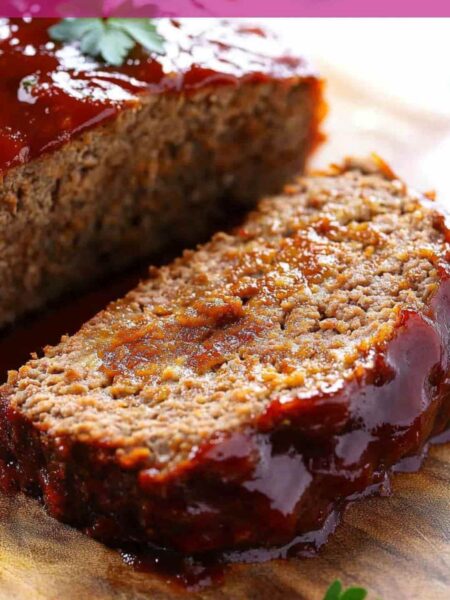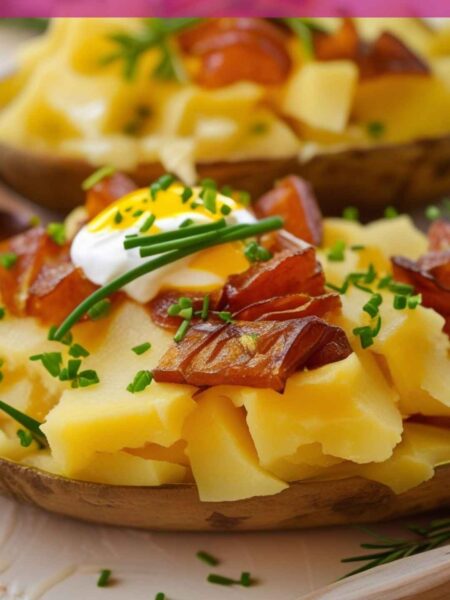Before we dive into the magic of soft boiled eggs, let’s set the scene a bit. Picture yourself at breakfast, a steaming cup of coffee in hand. You might want to pair those eggs with a few slices of crispy toast. Or how about some luscious avocado smushed right beside those golden yolks?
If you’re feeling fancy, throw in some smoked salmon or sautéed spinach for a little flair. The beauty of soft boiled eggs is their versatility. They can grace your plate for breakfast, join a salad for lunch, or even elevate a dinner dish.
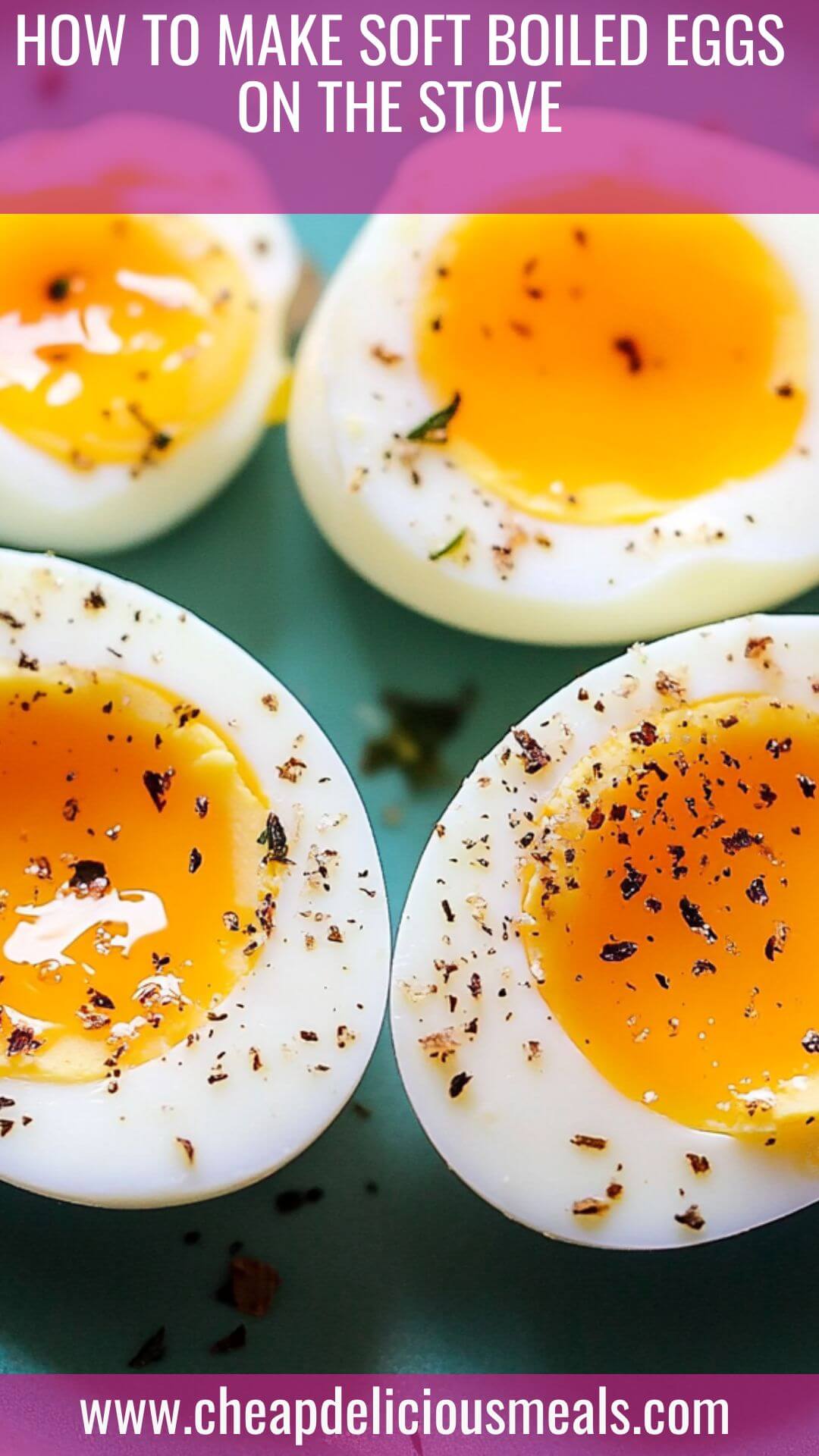
Ingredients for Soft Boiled Eggs
Let’s get our hands dirty (in a good way) with the ingredients. Here’s what you’ll need:
- 1 large egg – Cold from the fridge (this helps with cooking).
- A pinch of sea salt – Just enough to amp up the flavor.
- 1/2 teaspoon lemon zest (optional) – For a hint of brightness and depth.
These ingredients are simple, yet together they create a velvety experience. You might wonder, why the lemon zest? Well, I once added it on a whim, and let me tell you, it brought a fresh twist that I didn’t even know I needed.
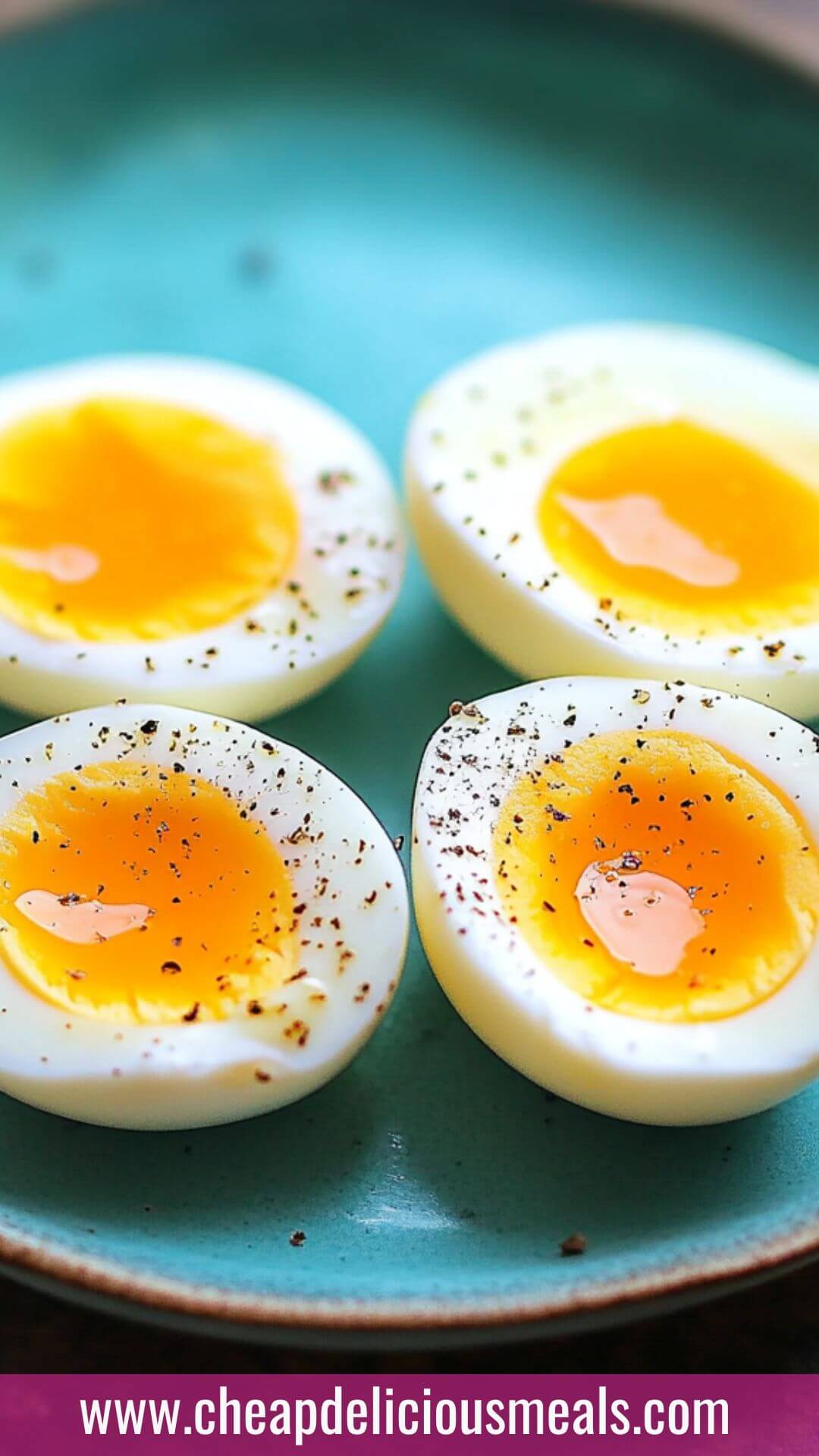
How to Make Soft Boiled Eggs on the Stove
Now, let’s get down to business. Here’s a detailed guide on making those glorious soft boiled eggs.
Step 1: Prepare Your Pot
Grab a small to medium-sized saucepan. Fill it with enough water to cover the egg by at least an inch. You want that water to generously envelop your egg, ensuring even cooking.
Step 2: Bring Water to a Boil
Place the saucepan on the stove and turn the heat to high. Keep a close eye on it. You want a rolling boil, not just bubbles timidly bubbling away. This might take a few minutes, so be patient.
Step 3: Add the Egg
When the water is just right, gently lower that large egg into the boiling water. I usually use a spoon to avoid any splash disasters. Here’s the key: timing is everything. For a perfectly soft yolk, you’ll want to boil it for 6 to 7 minutes.
Step 4: Ice Bath Time
While your egg is happily boiling away, prepare a bowl of ice water. After the timer goes off, promptly remove the egg and plunge it into the icy bath. This step prevents the cooking process from continuing and helps you peel the egg later. I learned this tip the hard way, as my first eggs turned into hard-boiled disasters.
Step 5: Peel and Serve
After about five minutes in the ice bath, remove the egg and gently tap it on a hard surface. Start peeling from the wider end where there’s typically an air pocket. You’ll find that the shell comes off surprisingly easily. If you’re feeling whimsical, sprinkle that pinch of sea salt and some lemon zest on top, or just dip your toast into the luscious yolk.
Recipe Notes
- The Egg: Fresh eggs will always yield the best results. The quality of the eggs matters. Organic and free-range options often taste better, in my experience.
- The Water: Using filtered water can enhance flavors, especially if your tap water has a strong taste.
- The Timing: Every stove is different. Experiment a little to find your ideal time.
- Ice Bath: Always have your ice bath ready before the egg is done cooking to prevent unwanted overcooking.
- Serving: Soft boiled eggs shine as a solo dish or as part of a meal. Try them on salads or ramen for a delicious finish.
Recipe Variations
While the classic soft boiled egg is unparalleled, let’s explore a few fun variations:
- Spicy Soft Boiled Eggs: Add a pinch of cayenne pepper or chili flakes to your salt. Simple yet impactful.
- Herbed Delight: Fresh herbs like dill or chives mixed into your salt elevate the dish nicely.
- Soy Sauce Version: For a twist, try serving them in a light soy sauce or ponzu dressing. This brings an Asian flair.
- Curry-Inspired: Sprinkle some curry powder on top for a fragrant and exciting flavor.
- Mediterranean Style: Serve with a drizzle of olive oil and crushed red pepper.
- Breakfast Bowl: Layer over warm quinoa with sautéed greens and a sprinkle of feta.

Conclusion
There you have it! Preparing soft boiled eggs is straightforward yet rewarding. With only a few ingredients and steps, you can enjoy this staple dish any time of the day. Perfect for breakfast, a quick lunch, or as an elegant dinner component, soft boiled eggs are versatile, tasty, and oh-so-satisfying. When you take that first bite, and the yolk flows freely, you’ll appreciate simple cooking done right.
So why not give it a go? Grab your eggs, and let the cooking adventure begin! Trust me, once you master this technique, it will become part of your cooking repertoire. You might just find yourself craving soft boiled eggs far more often than you expected. Happy cooking!
You’ll also like the following recipes!
- Easy Nacho Cheese Sauce Copycat Recipe
- How to Make Grandma’s Old Fashioned Stuffed Bell Peppers
- Best Classic Homemade Meatloaf Recipe
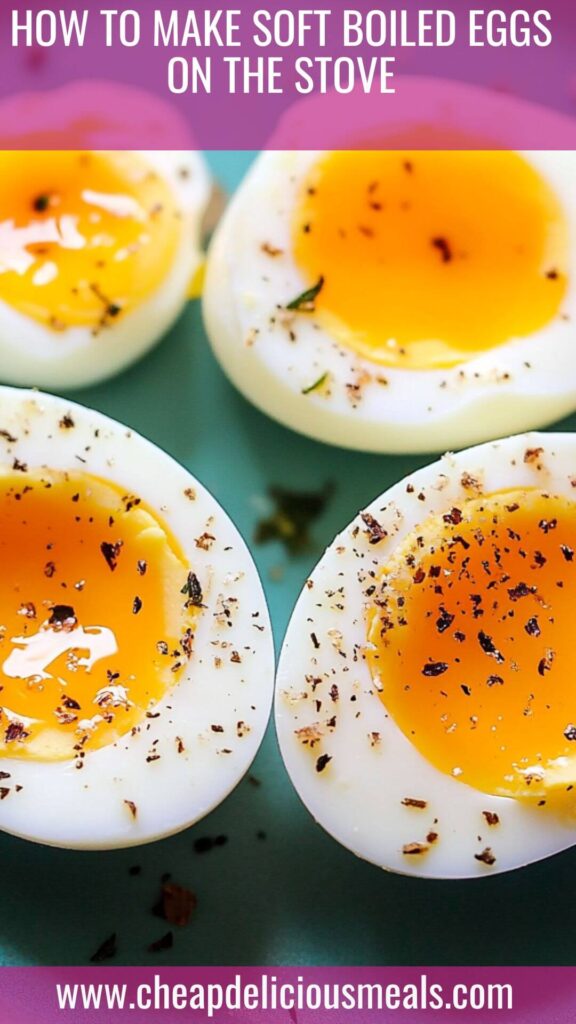
How to Make Soft Boiled Eggs on the Stove – Cheap Delicious Meals
Description
Let’s be honest, there’s something incredibly satisfying about cracking open a soft boiled egg. The egg yolk spills out like liquid gold, ready to mingle with whatever it touches. This dish is not only delicious but also nutritious. Eggs are rich in protein and packed with essential vitamins.
In my experience, soft boiled eggs fit beautifully into a busy lifestyle. They can be prepped in less than ten minutes and still deliver that comforting, gourmet vibe. I can’t count the number of times I’ve returned home after a long day, craving something simple yet delectable. Soft boiled eggs are my go-to answer.
Ingredients
Instructions
Step 1: Prepare Your Pot
-
Grab a small to medium-sized saucepan. Fill it with enough water to cover the egg by at least an inch. You want that water to generously envelop your egg, ensuring even cooking.
Step 2: Bring Water to a Boil
-
Place the saucepan on the stove and turn the heat to high. Keep a close eye on it. You want a rolling boil, not just bubbles timidly bubbling away. This might take a few minutes, so be patient.
Step 3: Add the Egg
-
When the water is just right, gently lower that large egg into the boiling water. I usually use a spoon to avoid any splash disasters. Here’s the key: timing is everything. For a perfectly soft yolk, you’ll want to boil it for 6 to 7 minutes.
Step 4: Ice Bath Time
-
While your egg is happily boiling away, prepare a bowl of ice water. After the timer goes off, promptly remove the egg and plunge it into the icy bath. This step prevents the cooking process from continuing and helps you peel the egg later. I learned this tip the hard way, as my first eggs turned into hard-boiled disasters.
Step 5: Peel and Serve
-
After about five minutes in the ice bath, remove the egg and gently tap it on a hard surface. Start peeling from the wider end where there’s typically an air pocket. You’ll find that the shell comes off surprisingly easily. If you’re feeling whimsical, sprinkle that pinch of sea salt and some lemon zest on top, or just dip your toast into the luscious yolk.
Nutrition Facts
Servings 1
- Amount Per Serving
- Calories 55kcal
- % Daily Value *
- Total Fat 4.5g7%
- Saturated Fat 1.6g8%
- Cholesterol 184mg62%
- Sodium 8mg1%
- Total Carbohydrate 1g1%
- Protein 3g6%
* Percent Daily Values are based on a 2,000 calorie diet. Your daily value may be higher or lower depending on your calorie needs.
Note
- The Egg: Fresh eggs will always yield the best results. The quality of the eggs matters. Organic and free-range options often taste better, in my experience.
- The Water: Using filtered water can enhance flavors, especially if your tap water has a strong taste.
- The Timing: Every stove is different. Experiment a little to find your ideal time.
- Ice Bath: Always have your ice bath ready before the egg is done cooking to prevent unwanted overcooking.
- Serving: Soft boiled eggs shine as a solo dish or as part of a meal. Try them on salads or ramen for a delicious finish.



